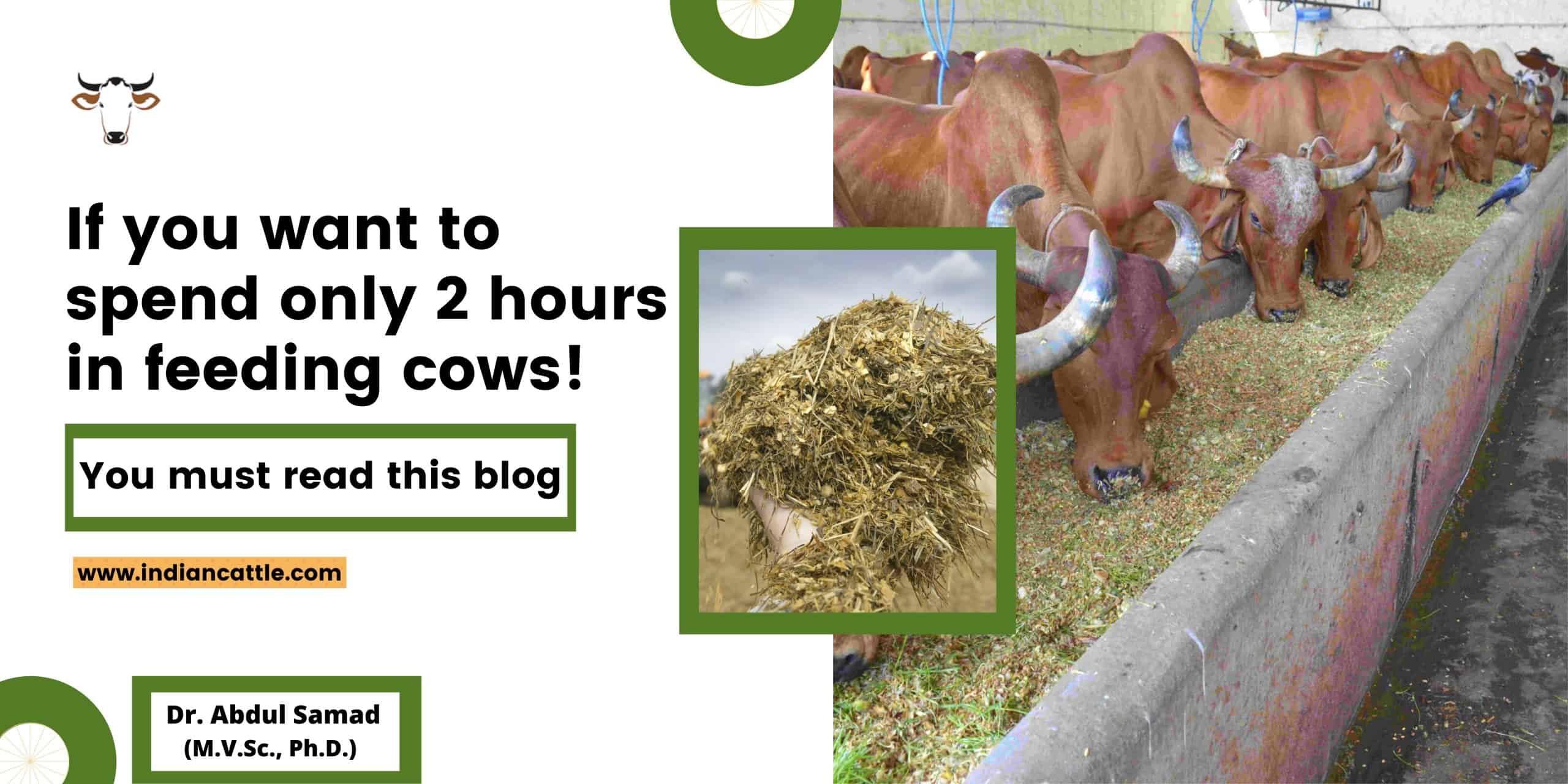
Farmers Should Include Silage in Cow Feed
Cattle Feeding Practices
The cattle feeding practices adopted by farmers greatly impact the animals’ capacity for milk production and consequently, the profitability of dairy farming. Most farmers struggle with cultivating the right quantity and quality of fodder. Typically, dairy farmers follow the daily cut-and-carry system, wherein the required quantity of fodder is harvested daily, chaffed, and then fed to the cattle. This system has three distinct disadvantages:
- It could take up to a month to harvest the fodder crop, during which time the field will remain uncultivated
- The nutritive value of the fodder will decrease over time
- It is labor-intensive and any negligence or delay will affect the feeding time and consequently, milk production.
It is instead far more beneficial to harvest the entire crop when it is at its optimum in moisture and nutrients and preserve it for the future. This saves on daily labor costs, ensures there are no variations in feeding time and that the field is available for taking the next crop. You must know the cattle feed management and its necessity. After harvesting, fodder crops can be preserved by sun-drying as hay. It can also be preserved in its green form by anaerobic fermentation or ensiling as ‘silage’, also called ‘mur’ in local Indian languages. World over, silage is the main ingredient in cattle feed and is used to supply a large percentage of the cattle’s dietary energy, protein, and fiber requirements.
How to Prepare Silage for Cattle Feed
The principle of ensiling is very simple: it mimics the rumen fermentation process. Silage is also known as “pre-digested feed”. Most fodder crops comprise around 6-10% soluble carbohydrates in the form of sugar. When allowed to ferment in the absence of oxygen, carbohydrates are converted into acetic acid or acetate. The key factor in the entire process is ‘anaerobic fermentation’; the presence of oxygen spoils silage since it enables the growth of aerobic putrefying bacteria and fungi.
When crops contain up to 65% moisture and have just about started developing grains, they are at the ideal harvesting stage. A field test for moisture content is to clench and squeeze the fodder leaves; they should feel soft and release a little moisture. The entire crop must be harvested within two days. In case the moisture content is high after chaffing, it can be left for shed drying overnight and then be preserved.
How to store chaffed fodder
Chaffed fodder can be stored in an underground silo, a silo tower, a silo room, or silage bags. Your choice will largely depend on the quantity produced, investment capacity, and frequency of silage production.
What can be added while making silage
In effect, there is no need to add anything extra unless you suspect that the forage crop is not rich in soluble carbohydrates, in which case molasses or jaggery solution can be added. It is important to note that an excess of carbohydrates might compromise silage quality. Some farmers add mineral mixture or urea, but these are not useful and hence should be avoided.
How to Compact
Since preserving chaffed fodder in an oxygen-free environment is critical, it is important to compact the fodder after it has been layered. This can be done manually by stamping or by using a hand compactor. Alternatively, for larger quantities of silage, a mechanical roller or tractor can be used. To maintain anaerobic conditions, it is important to cover the machine from all sides with plastic sheets. To maintain the compact pressure, spent tires or stones can be put on the top of the silo. For small-hold farmers who have space constraints, silage bags are available in the market which offers capacities ranging from 50 kg to one ton. Smaller bags make silage easier to transport. Spent plastic fertilizer bags can also be used as these are cheaply available. These bags can also be used multiple times if the inner liners are changed after each use.
The time required for ensiling Cattle Feed:
It typically takes one month to complete the ensiling process. Once the process is complete, the sweet smell of the silage will be evident even from a distance.
How to assess silage quality:
The quality of silage can be assessed by physical examination, nutritional analysis, and microbial tests. Good quality silage will smell sweet, whereas spoiled silage will smell foul. When silage is infected by fungi, it turns black. It is important to get silage examined so that your nutritionist can advise you on proper feeding practices that optimize the cost of feed. Microbiological analysis is especially important as it helps you ensure your silage is free from pathogens such as listeria and clostridia.
What fodder crops can be ensiled?
Any forage or fodder crop comprising 7-10% soluble carbohydrates and grain is ideal to harvest for silage production. Typically, maize, jowar, and hybrid Napier fodder make for good silage. When barley, winery, vegetable, or fruit waste is available, these can also be incorporated into forage.
Silage from failed crops:
Silage can also be prepared from crops that have failed due to drought or infestation, although its quality will depend upon the moisture, nutritional content, and crop age.
Nutritive value of maize silage:
| Dry-matter | 23.5 – 25.0% |
| Crude protein | 6.5- 8.0 % |
| Crude Fibre | 23.5 – 25.0% |
| NDF | 49.3% |
| ADF | 25-27 % |
| Ether Extract | 2.5-2.6% |
| Ash | 4.8% |
| Gross Energy | 18.9 MJ / Kg dry matter |
| ME | 10.5 MJ/Kg dry matter |
You may like to read: Sandip Pawar – Successful Progressive Farmer

